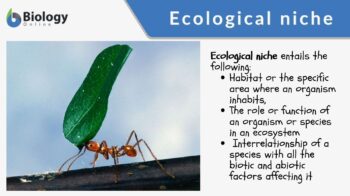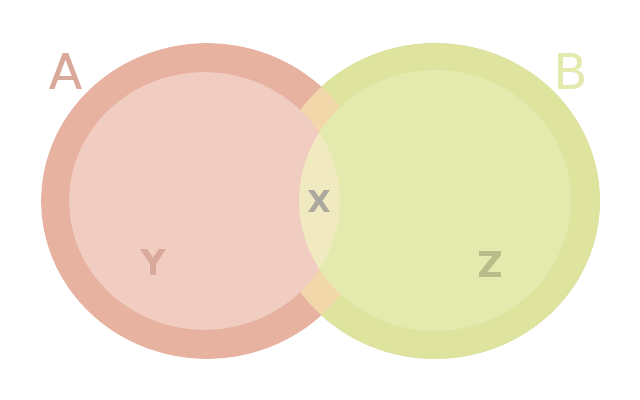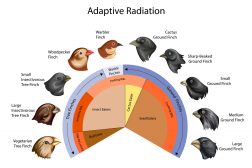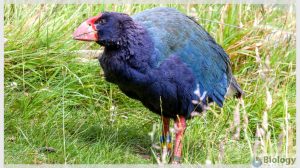
Ecological Niche
n., plural: ecological niches
[ˌiːkəˈlɒd͡ʒɪkl̩ niːʃ]
Definition: the ecological position of a species in an ecosystem
Table of Contents
Ecological Niche Definition
An ecological niche refers to the interrelationship of a species with all the biotic and abiotic factors affecting it. This definition of niche though has changed over time. Joseph Grinnell in 1917 coined the term niche, which he used as mostly equivalent to a species habitat. In 1927, Charles Sutherland Elton regarded niche to be equivalent to the position of a species in a trophic web. In 1958, George Evelyn Hutchinson used the term niche to describe the multi-dimensional space of resources available to and used by a species.
Despite the varying definitions of niche, it is now generally considered to pertain to how an organism or a population responds to, as well as alters, competition and the distribution of resources. It particularly describes the relational position of an organism or a population in a particular ecosystem.
A niche may be influenced by biotic and abiotic factors of an ecosystem. However, the niche of a species in a particular ecosystem will help set the features of its environment as these features will be crucial to its survival.
Niche definition
Niche is defined in a general sense as a cavity, hollow, or recess, especially in a wall. However, in biology and ecology, a niche pertains to any of the following:
- The specific area where an organism inhabits
- The role or function of an organism or species in an ecosystem
- The interrelationship of a species with all the biotic and abiotic factors affecting it
Etymology
The term niche (plural: niches) came from the Old (and modern) French niche, from nichier, meaning “to make a nest”, from Latin nidus nest.
Niche vs. Habitat
In ecology, a habitat is a place where an organism or a biological population normally (or is adapted to) live(s), reside(s), or occur(s). It may be a forest, a river, a mountain, or a dessert. While habitat is a geographical place a niche is the relationship of a species with the components of an ecosystem. The niche of an organism depicts how it lives and is able to survive in its environment. Thus, a habitat may consist of many niches and could support various species at a given time. Niche is all about a single species as a part of the habitat with all its biological activities as influenced by biotic and abiotic factors. The niche of organisms could, therefore, be defined by living factors (e.g. predators, competitors, parasites, commensals, etc.) and non-living factors.
Niche Formation
Both abiotic and biotic factors help shape the niche of an ecosystem. Abiotic factors, such as temperature, climate, and soil type, of an ecosystem will help form the niches while natural selection works to set which niches would be favored and not. Through time, the species eventually develop special features that help them adapt to their environment. If they fit in, they could thrive and survive in surroundings that match their features. Nevertheless, the extent of their population may be controlled by biological constraints, such as predation, competition, and parasitism.
- Competition in a habitat could limit the population of a species as co-habitats could compete for available nutrients, space, light, and other vital resources.
- Predation could also restrain the species’ population depending on the number of predators and the extent of predation.
- In parasitism, the presence of parasites that take the species as their host and the vulnerability to pathogens causing diseases are also factors that can restrain the species population. The niches in an ecosystem form and evolve as these factors change.
Niche Partitioning
Niche partitioning is defined as the process through which natural selection will drive competing species into separate niches as the niche is species-specific. No two species can occupy the same niche. Coexistence, though, could help the competing species to form their own ecological niches. They must be able to find ways to coexist, e.g. by resource differentiation (or niche partitioning), so as to avoid competition for limited resources. Otherwise, one of the two competing species will be favored by natural selection whereas the other will eventually become extinct.
Types of Niches

- A fundamental niche is defined as the niche of a species in the absence of competition. Conversely, a realized niche is the niche that a species occupies due to pressures, e.g. the arrival of a competing species to its habitat. (1)
- Niche overlap is defined as that when two organisms use the same resources or other environmental variables. Often, niches overlap only partially as the resources are shared. (2)
- A vacant niche is a niche that is yet to be occupied in an environment. However, the existence of a vacant niche is still a matter of debate. Nevertheless, possible causes of vacant niches are presumed to be habitat disturbances (e.g. forest fires and droughts) and evolutionary eventualities (i.e. when species failed to evolve).
Examples of Ecological Niches
Examples of ecological niches are as follows:
- the niche of beavers
- the niche of flightless dung beetle
1. Niche of beavers
Beavers (genus Castor) are nocturnal, semi-aquatic rodents. They are known for constructing dams, canals, and lodges. Because of this activity, the water flow in the river where they live could alter, affecting both biotic and abiotic features of their environment. Other species that live near the watershed could be affected by the niche of the beaver in shaping the ecological features of their environment.
2. The niche of flightless dung beetle
The flightless dung beetle (Circellium bacchus) occupies a unique ecological niche. They feed on animal droppings and store them as dung balls in burrows. Eggs are laid inside the dung ball so that when they hatch the larvae could have available food resources already. This eating behavior of the dung beetle helps aerate the soil and re-introduce nutrients back to the soil.
Watch this vid about dung beetles and their ecological niche:
Try to answer the quiz below to check what you have learned so far about the ecological niche.
Further Reading
References
- Ricklefs, R. & Relyea, R. (2014). Ecology The Economy of Nature. W.H Freeman and Company. p. 249.
- 13 The Ecological Niche. (2015). Retrieved from Utexas.edu website: http://www.zo.utexas.edu/courses/bio373/chapters/Chapter13/Chapter13.html
- Ecological Niche. (2019). Retrieved from Utexas.edu website: https://web.ma.utexas.edu/users/davis/375/popecol/lec11/niche.html
- Ecological Niches. Retrieved from https://www.montana.edu/screel/teaching/bioe-370/documents/Biol 303 niches.pdf
- Ecological Niches. (2019). Retrieved from https://apesreview.weebly.com/ecological-niches.html
© Biology Online. Content provided and moderated by Biology Online Editors







